






































A few weeks ago the phone rang.
On the other end of the line was a local businessman who asked if we could meet in his office first thing the next morning to discuss advertising. “Sure, I’ll see you there,” I said. After sitting down with him to talk about his marketing objectives, I began to realize that he was in a very unique business that served a non-local clientele and was unlikely to benefit by advertising with us. “I would love to work with you, but, frankly, I am not really sure how this will help grow your company,” I shared. But he pressed, “Please go on— what are your rates?”
What happened next was truly one of the most remarkable and touching moments of my career so far. After revealing the rate for one of the display ad sizes he reached over the desk and tapped his index finger on the magazine. “Okay, I’ll take that one. But, it’s not for me.” Responding to my bewidlered expression, he went on to explain, “I want you to choose someone who needs a boost and give it to them. And, promise me that you will not tell them I was the one who had paid for the ad space. That’s very important, and it will have to be a condition of our agreement.”
“Okay... but why are you doing this?” I asked skeptically. Looking up from the check he had been writing, he launched into a ten-minute-long discourse about how much he loved our community, and how it had supported him and his business through thick and thin over the years, and how much he believed in the magazine and wanted to support us, too. He said, “Now I can help you, and you can help somebody who needs a boost.”
There was that word again, “boost.”
He continued on, “I help you, you help them, they will help somebody else. It all goes around and comes back a hundredfold, you watch.”
I left that meeting with my head spinning and the newfound responsibility to make a phone call. Who did I know that could use a boost? Although there were so many worthy choices, one in particular came to mind. I picked up the phone, mindful of my duty to not reveal their benefactor, I said, “You’re not going to believe this, but I have some really great news for you today…”
We are fortunate that our area has had so much national recognition for being “The Happiest Place” and “The Best of This and That,” but these designations fail to tell the whole story—that our beautiful Central Coast would be nothing without its people. At this time, I would like to take the opportunity to thank everyone who continues to provide our boost. To those who had a hand in producing this issue of SLO LIFE Magazine , and especially to our advertisers and subscribers, I say, “Thank you.” We would not be able to do it without your help, nor would we want to.

Live the SLO Life!
Tom Franciskovich tom@slolifemagazine.com

Have some comments or feedback about something you’ve read here? Or, do you have something on your mind that you think everyone should know about? Let us know! To have your letter to the editor considered for publication in the “In Box” section, please email it to info@slolifemagazine.com. Be sure to include your full name and city. And, it’s best to keep it to 250 words or less.
Our advertisers get great results and we would like to tell you about it, but first we want to know about you and the objectives of your business. Call us at (805) 543-8600 to talk with our publisher, Tom, about different advertising programs—we have something for every sized budget. Or, you can log on to slolifemagazine.com/advertise and we can send you a complete media kit and loads of testimonials from happy advertisers.

4251 S. HIGUERA STREET, SUITE 800 SAN LUIS OBISPO, CA 93401
SLOLIFEMAGAZINE.COM info@slolifemagazine.com (805) 543-8600 • (805) 456-1677 fax PUBLISHER Tom
So many of the stories we publish come from our readers’ great leads. We are always looking for interesting homes to profile (see “Dwelling” on page 26), have a recipe that your friends and family love? Share it with us! To get an idea, check out “Kitchen” on page 58. Is there a band we should know about? Something we should investigate? Go to slolifemagazine.com and click “Share Your Story.”
Submit your story ideas, events, recipes and announcements by visiting us online at slolifemagazine.com
Contributions chosen for publication may be edited for clarity and space limitations.
If you would like to advertise, please contact Tom Franciskovich by phone at (805) 543-8600 or by email at tom@slolifemagazine.com
The opinions expressed within these pages do not necessarily reflect those of SLO LIFE Magazine. No part of this publication may be reproduced in whole or in part without the expressed written permission of the publisher.
Complete details regarding circulation, coverage and advertising rates, space, sizes and similar information are available to prospective advertisers. Please call or email for a media kit. Closing date is 30 days before date of issue.
LETTERS
info@slolifemagazine.com
4251 S. Higuera Street, Suite 800 San Luis Obispo, CA 93401
Letters chosen for publication may be edited for clarity and space limitations.








Dear SLO LIFE, I think fracking is a really important issue, so I hope it is okay that I sent this out to you. Please have a look at the petition currently on credoaction.com & send it out to your readers on the central coast who want to keep it pristine here :)
Thank you!
Kristina DellaGatta
>> Thanks, Kristina, this really opened our eyes and we decided to look into it further. Please turn to page 44 to find out what we learned about fracking on the Central Coast.

Local entrepreneurs buzzed about Rick Stollmeyer in the last issue. “It’s amazing that the whole thing started in a garage out in the Arbors,” said one. But, mostly readers focused on one passage: “He said we should get a partner, then told us there’s ‘a hundred different ways the relationship will fail,’… what’s up with that?” To that question we replied, “Therein lies the magic.”
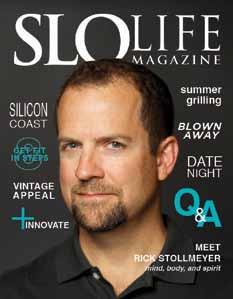
Dear SLO LIFE, The Literacy Council has two tutor trainings coming up in the next couple of months. The first is scheduled for Saturdays August 17 & 24 and the next one will be held Saturdays September 14 & 21. We hold the trainings in the 3rd floor conference room of the SLO County Library. They begin at 9:00am and end at about 3:30pm. There is a $25.00 registration fee that helps out with materials costs. After they complete the training, our tutors work oneon-one with adults 16 or older. Our learners are both speakers of English as a first language and speakers of English as a second language and each one sets his or her individual literacy learning goals. I’m sure some of your readers would be perfect tutor candidates and we do need people throughout SLO County. Anything you can do to help us get the word out would be very much appreciated.
Thank you, Bernadette Bernardi Executive Director



The Literacy Council bernadette@sloliteracy.org


Dear SLO LIFE,
On behalf of Leadership Class XXI, I wanted to let you know that an RFP is now available at http://leadershipslo.org/cm/Class21RFP.html for local artists to help us replace the current exhibit at the Hall of Counties in the State Capitol building in Sacramento. $15,000 has
We would like to give a SLO LIFE Shout Out to our cover photographer, Chris Bersbach, who continues to raise the bar each issue. As much as we’d like to keep him all to ourselves, Bersbach, pictured here setting up his vintage camera, is available to do all different types of photography. He can be reached at 805-448-2841. Tell him we say, “Hi!”

been allocated and proposals should be submitted electronically in PDF form no later than 5pm August 15 to leadershipsloxxi@gmail.com Thank you, Rachel Carscaden
>> We decided to research Leadership SLO a bit in this issue. Learn more about its Legacy Projects by turning to page 50.
Thank you to Brad Daane, who in addition to handling the bass for local band Truth About Seafood, is also a mighty fine photographer. Recently, he took this panoramic shot toward the end of their Concerts in the Plaza show last month. The Concert series produced by the Downtown Association never disappoints as can be seen with all of the happy faces in the crowd here…

The sign of the horns means different things to different people, but in the context of a rock concert it can be interpreted in only one way: heavy metal!


Please send your comments to info@slolifemagazine.com

Follow SLO LIFE on Facebook: Visit facebook.com/slolifemagazine Visit us online at slolifemagazine.com
Letters may be edited for content and clarity. To be considered for publication your letter must include your name, city, state, phone number or email address (for authentication purposes).
Equal parts disgusting and awesome, Bubble Gum Alley in downtown SLO is in the running to be named the “8th Wonder of the World” by the same outfit that apparently picked the Seven Wonders—VirtualTourist.com. The “ABC” experts at the Chamber of Commerce estimate there are 1.7 million pieces of “already been chewed” gum stuck to the walls of the 70-foot-long alleyway. Those interested in voting for Bubble Gum Alley should visit virtualtourist.com/8thwonder before September 30.


Animal rights advocates line up to pressure Morro Bay City Council to deny the Morro Bay Aquarium renewal of its lease on The Embarcadero. The space will become available to other interested businesses and any facility proposing to house animals must be accredited by the Association of Zoos and Aquariums. Upon hearing the news, seals housed in the 50-year-old establishment could be heard barking with joy.

SLO County Supervisor, Paul Teixeira, passes away unexpectedly at 57 of a heart attack. The longtime Nipomo resident is remembered fondly for his steady hand and honorable service. The loss of the “lovable big galoot,” as he was affectionately known, sets up an interesting situation for filling his seat. Teixiera had been a reliable conservative vote along with Debbie Arnold and Frank Mecham on the five member board. But, now Governor Jerry Brown will be naming his replacement which will likely tip the balance in a progressive direction with Bruce Gibson and Adam Hill.


After a long special election to fill the seat vacated by Andrew Carter, SLO Planning Commissioner Carlyn Christianson emerges victorious with 48% of the vote. The campaign, which was marked by a long succession of candidates dropping out finally ended up as a choice between Christianson and Paul Brown (Don Hedrick, the third candidate, received 2.5% of the vote). [Get to know Christianson by turning to page 18]

We shall protect the lives and property of the citizens and visitors of our City from the adverse effects of fires, medical emergencies and other dangers caused by man or nature. We shall fulfill our mission with Courtesy & Service by motivated, productive individuals who value their profession, co-workers and the community they proudly serve.City of San Luis Obispo Fire Department Website -
Bees invade the Fremont Theater in San Luis Obispo just in time to disrupt Festival Mozaic and SLO International Film Festival’s screening of the documentary “Following the Ninth: In the Footsteps of Beethoven’s Final Symphony.” When our reporter finally stopped a particularly

Facing a severe water shortage, Paso Robles taps its share of Lake Nacimiento for the first time. The water is being pumped from the lake into the Salinas riverbed to counteract the drought this year. By allowing it to simply drain into the city’s existing wells below the sandy riverbed, only about 25% of the water will make its way into the drinking supply. Since the end of June nearly 50 million gallons have been diverted from the lake to the river, which is expected to partially counteract the exceptionally dry year.

Shawn Stamback of San Luis Obispo is very nearly swallowed whole by a humpback whale while snorkeling at Avila Beach. Video shot from the boat during the incident is posted on YouTube and receives millions of views within 24 hours of the incident. The clip, which is titled “Whales almost eat divers,” shows Stamback did, in fact, come extremely close to being the lunch special. See it for yourself at: youtube.com/watch?v=OUt7wK919mk

on a solo effort to repeal the Oceano Dunes dust control regulation known as Rule 1001. The rule was established after a multi-year study and a vote by the 12 member Air Pollution Control District (APCD) board in November, 2011. Peterson, who has been on that board since January made an ill-conceived comment on the The Dave Congalton Radio Show when, in response to Congalton’s comment about the health consequences for people dying on the Nipomo Mesa as a result of dust inhalation, she said, “They’re not dying fast enough.” Peterson’s colleagues on the city council, who do not support a repeal of Rule 1001, are now contemplating removing her from the APCD board.

renew its status as a battleground pitting business interests against open space advocates once again. Clint Pearce of Madonna Enterprises and Gary Grossman of Coastal Community Builders reveal that they are in escrow on the $19.7 million, 131acre ranch and are in the preliminary stages of proposing a new development which they expect to be a combination of residential, commercial, retail, farming, and a hotel. If Pearce and Grossman have their way, the land bracketed by Madonna Road, LOVR, and Highway 101 may be used for something other than growing cilantro.

from a win in the San Luis Obispo City Council special election, Carlyn Christianson met with us one afternoon recently to dish on everything from local land use issues to the current state of her love life...

Congratulations on your win, Carlyn. Does that make you one-for-one, undefeated?
I’m actually one-for-two. I ran for Cuesta College Board of Trustees in 1996 and lost. I learned back then that I really don’t like campaigning—I don’t. I’m very happy with the outcome of the recent election, of course. Very honored. I still don’t like campaigning. But, doing a job well and working hard are not always the same as liking something.
You’ve been active in local land use issues for years. How did you get involved?
I was working for Planned Parenthood and found that the workers there couldn’t find places to live. And I began to find also that those that could, were unable to afford health care because their housing costs were so high. But, in order to balance the open spaces that we all cherish with affordable housing, I found that you have to build in the city. That means smart growth and really good urban design. That means going up and going smaller. Mixed use and granny units. There are all kinds of things that can be done to incrementally add housing units. It doesn’t solve the problem, but it starts to help. And Cal Poly has been getting a lot better about building on-campus housing for its students.
Okay, that makes sense. Let’s talk about your childhood. We moved a lot. I lived in Japan for nearly a year in 1963 and I lived in Germany for a year in 1961 as a first grader. And, then I lived in
Germany again for a couple of years in junior high school, sixth and seventh grade. My dad was a nuclear engineer for General Electric. He helped build nuclear power plants. We lived all over the place, but San Jose was our home base.
I started at UC Santa Cruz but it was just too touchy-feely for me, so I transferred to Davis where I created my own major called Women in American Society. I was one of the first Women’s Studies majors in the UC System. I then went to Hastings Law School in San Francisco and when I graduated—much to my parents’ horror—I moved to Telluride, Colorado to become a ski bum even though I don’t ski because I’m afraid of heights! [laughter] I had gone to see a total solar eclipse in the Winter of ’79 in the mountains

of Montana. I had never been to the Rockies before. I had been to the Alps but it was just stunning, I just loved them. I love the mountains.
Speaking of mountains, are the problems we face today just too big to solve?
This is the way I look at it: depending on the problem, there isn’t a final “one-stop-shop” solution. But, there’s always something you can work on. Any issues that are big—like air quality, homelessness, housing— just because it may be seen as a big, huge issue that’s never going to get solved, doesn’t mean you shouldn’t do something about it and do whatever you can do. That’s my philosophy. It’s tempting to go, “Ahhhhh, we can’t do anything about it!” But really, the older you get and the more you do this stuff, the more
you realize that, you know, if we just keep plugging away you do get somewhere that is different than where you were before. And, so you have to just keep trying.
We’ve heard that you are a regular at the Yoga Centre. That is true. When Jeff, my partner, died unexpectedly in late-2010 that was a very hard time for me, obviously. I started going to yoga to have a physical activity. I couldn’t run anymore because of my knees, so I chose yoga not only for that reason—I like doing it because it is very good for you physically—but, also it’s very good for calming and centering. I like the group. It was nice to make new friends. So, the whole thing was very appealing to me. I’m just someone that thinks very clearly after physical exercise and yoga has become a spiritually and emotionally satisfying thing for me, as well.
What don’t we know about you? Come on, Carlyn, give us something good!
Hmm… that’s a tough question. I really can’t think of anything else. I’m pretty much an open book after the campaign. But, oh, okay, here’s something for you... if there’s anybody out there that wants to go out on a date, I’m a very strongminded but fun person! [laughter] My friends keep telling me that I need to mention that I’m single whenever I am interviewed so that all of you in the press can help get the word out for me. So there you go, there’s your scoop!





















































 BY STEVE E. MILLER
BY STEVE E. MILLER
Connecting two of the world’s most iconic granite formations—Morro Rock in the Pacific and Half Dome in Yosemite Valley—much of Highway 41 is nothing more than a two-lane country road. Although it does widen into a full-fledged freeway for a stretch through Fresno, travelers are treated to hairpin turns and natural wonders on either end. Here, local photographer Steve E. Miller sets up alongside a remote stretch of road halfway between Atascadero and Shandon. And, with his trusty Canon digital SLR resting on a tripod at dusk, he sets it for a thirty-second exposure, just long enough to capture the taillights of a car passing by but too slow and with not enough light to pick up the car itself. According to Miller, the shot took “a bit of experimentation and a lot of patience,” but the end result, as you can see here, was well worth it.
Do you have an amazing photo to share? Email it to info@slolifemagazine.com

In this installment of our “Meet Your Neighbor” series, SLO LIFE Magazine sits down for a conversation with Tina Swithin. Following her divorce, she faced a highly contentious custody struggle while acting as her own attorney in Family Court. She began to share her experiences during the proceedings through her blog, “One Mom’s Battle.” And last year, after receiving international recognition for her blog, she wrote a book called “Divorcing a Narcissist—One Mom’s Battle,” a gripping, first-person account of her struggle to retain custody of her children. Aside from gaining notoriety as an expert in the matter, Swithin also works with a local marketing firm to promote tourism to the area, and writes travel features for the Huffington Post. She has two young girls, Makena and Kailani, and she recently married Glenn Simpson. Here is her story...
We like to take it from the top, Tina. Where are you from?
I moved here from Chicago with my dad when I was ten-years-old. My mom was 17 and my dad was 19 when I was born. I grew up in Arroyo Grande. It was a big change. I remember being really bored in school because the schools in Chicago were ahead. I was like, “I’ve done all of this last year!” So, it was a big change, but I loved it. I had a really rocky childhood. My biological mother suffered from bipolar disorder and chose to self-medicate with drugs and alcohol. My dad did the best he could, but he was a very young father. We moved around a lot. My dad struggled with alcohol when I was little. And, so yeah, it definitely wasn’t the best childhood.
I have always had an entrepreneurial spirit. I started my first business when I was 14, in high school. I made chocolate lollipops. We had a friend who owned a restaurant, so I would go in there and they would let me use their kitchen. I would make them there and then sell them at Doc Burnstein’s. A couple of the local hotels

had them for sale, too. And then, when I was 19, I started a pet sitting business. I ended up with 13 employees. I did that from the time I was 19 to 26, when I was married. So, I kind of bypassed college. I mean, I took classes at Cuesta, but mostly business-related classes. Even at Arroyo Grande High School I took a marketing class from my favorite teacher, Mr. Brewster. I just knew that was the direction I wanted to go.
So, was your blog started as a business venture? No, not at all. I started the blog really with the intention of giving my friends and family a place to go and check in to see how things were going. Then one day, I was doing some work at home and I had the Today Show on. I never watch TV, but I just happened to have it on the day they had Christie Brinkley come in for an interview about her divorce from her husband, Peter Cook, a diagnosed malignant narcissist. As Matt Lauer continued to challenge her and convey his skepticism, she finally said to him, “Google ‘divorcing a narcissist.’” That morning I watched as my blog took off across the internet. It went from having a 100 views a month to 30,000.


Wow.
I ended up connecting with Christie. She read my blog, and I didn’t know that. She had her assistant contact me and we went down to LA to meet with her. The way my husband, Glenn, described it was that there were several people backstage to meet Christie, but he said, “Christie was there to meet you!” She just lit up and said, “Thank you so much for sharing your story. It’s so important that you keep talking and helping people so they don’t feel alone.” A couple of weeks after that I said to myself, “I need to put this into a book format,” because I thought I could reach so many more people. So, I started last April just writing a few things every night after the girls went to bed. And six months later I had a book. I read your book and it kept me up really late one night, which is when my wife walked out to the living room and asked, “What are you doing?” You should have seen the look she gave me when I told her I was reading “Divorcing a Narcissist.” [laughter] But, seriously, what has writing done for your life?
Writing the book was a truly cathartic experience and did more for me than four years of counseling was able to achieve. It was, by far, the most healing thing I have been able to do. I felt like I had huge closure. I got it all out. It’s resonated with people all over the world. I’m to the point where I can’t answer all of the emails I get about the book. There was a lady from Ireland who sent me an email recently and her subject line read, “You saved my life today.” She went on to tell me how she was gone, done, and just felt that she could not go on another day. She told me that the book inspired her, had given her hope, and reignited a spark in her. And she was going to keep fighting. It’s really overwhelming at times because I’m thinking, “I’m just this little ol’ person!” But, I have people contacting me to say, “I want to come to California to meet you.” It’s kind of weird, but it’s good. It makes me feel that I’d go through it again––I don’t know if I would put my daughters through it again––but I would do it again to connect with people the way I have and give people hope.
Has there been any negative feedback?
No, if anything it has inspired people to act. There is a woman in Santa Barbara who is a doctor who recently read my book and sent me an email at 6am the next morning saying, “I have literally been awake all night reading your book and I can’t believe it. You’ve just explained my marriage, my divorce, all of it. I felt so alone before this. I connected with your story. I want to help you.” She hired an attorney for me. I’ve been doing this on my own for four years. It’s been like having a part-time job acting as my own attorney. So she reached out to her friend who is the DA in Santa Barbara to get a recommendation
for an attorney up here, and paid a retainer for me to finally have my own attorney.
But, you had been doing great as your own attorney. I found myself pumping my first and saying, “Go, Tina!” when reading the GPS tracking device courtroom scene.
Yes, my ex-husband was caught lying to the judge. Although there is really no such thing as perjury in Family Court, judges do not like to be lied to. When I suspected he was not being straight about where he was taking the girls on the weekends it frightened me.
I gave my daughters a cell phone that had been enabled with GPS tracking. It gave me a report of their location every hour on the hour and I had printouts. As he was telling the judge in elaborate detail where he had taken the girls, I waited until he was done and then presented evidence to the contrary.
I knew my only chance of proving that he was a liar was to catch him in the act—in the lie. The judge called for a 15 minute recess and came back to announce that there would be sanctions. I was awarded full legal and physical custody and it also ended the girls’ overnight visits with him.
You and your ex-husband ran separate businesses, which both fell apart along with the marriage. What became of your childcare services business, SLO County Sitters?

In the beginning, it took everything in me to stay here where so many bridges had been burned. I was like, “Yes, I was married to him; but, no, I am not the same person.” And guilt by association, and all of that. Luckily it’s a really great community and people have been very supportive. People told me, “This is your home. Don’t leave.” I reached out to a lot of people who were owed an apology, even if it wasn’t my doing. But, I felt that for those people that had a bad experience through my ex-husband’s business dealings needed to hear from me. I just said, “I’m here, I apologize.” And, then when my own business went under, that was really, really hard. That wasn’t just a business to me, that was my third child. I put my heart into that, more than anything else in my life. To have that fail... we lost everything. I mean, everything was gone. And to know that I had let people down who I knew were depending on me for childcare. I was emailing clients to say, “I will come to your house to personally babysit your kids.”
You have such an incredibly inspiring “lemons to lemonade” story. Do you ever speak publicly to share it with others?
Public speaking is one of my fears that I need to get over. It’s just never been my thing. I was just hypnotized for it. I don’t know if worked––I haven’t given a speech yet! [laughter] I was approached by the Today Show about my book a few months ago, and one of the questions they asked me was, “How comfortable are you on camera?” And, I said, “Not at all!” Anyway, I had a two hour hypnosis session. He had something
The fear for my life intensified. I called my local women’s shelter. It was by far the most humbling phone call that I had ever made. This was the very place that I had volunteered every year during Thanksgiving and Christmas. I packed two sleepy, pajama-clad little girls into my car, and we met an intake counselor at a hotel parking lot. After she assessed our situation, we followed her to a hidden residence in town where we stayed.
Driving to the shelter was surreal. My legs were shaking so badly that I could barely keep my foot on the gas pedal. How did my life come to this? I thought I was making the right choices. I had married someone who appeared stable and successful by every sense of the word. He was smart, he went to a good college and his parents had been married for thirty years. Nine short months ago I was living in a brand new home in a gated community. Today, I was taking my children to a stay in a women’s shelter.

hanging from the ceiling and he told me to watch that while he was counting down backwards. I remember the whole thing and it was the most relaxed I had ever been in my entire life. But, it was almost like a counseling session. He went back and talked about childhood things and where you may have been stumped in life. It was kind of weird, but really cool.
Speaking of weird-but-cool, I understand you have a great first date story. [laughter] Yes, as a matter of fact, I do! Glenn was married for 16 years and has three boys. He had been through a divorce two years before mine started. For the first six months we just had a really solid friendship and I didn’t introduce him to the girls. He’s been a park ranger for the county for 23 years. He’s now the supervising ranger at Lopez Lake. We got married in April. So, our first date was at The Porch in Santa Margarita. It was the first and only date I had been on since my split. We had a great visit and said our goodbyes. Then Glenn broke all of the rules of dating when he called me two hours afterward to say, “Do you want to have lunch?” [laughter] Since I just had eaten lunch, we agreed to meet again that day for another coffee. Those two coffee dates were the beginning of a wonderful, magical friendship based on mutual respect and adoration. I felt alive like I had not felt in a long time.

You’ve been through the ringer, Tina. How do you reconcile all of this?

It starts with taking personal responsibility for the situation that you are in. It would be easy for me to sit here and blame everyone else and say that I’m a victim. I’m not a victim, I don’t ever want to be a victim. I’m a survivor. I’ve learned. I’m moving forward in a positive way and I want to help others. I’ve got another couple of books in the works. And I’m working with someone here locally who is a computer programmer to help me create a Yelp-like website for the Family Court system so that people can review and rate attorneys, social workers, child welfare services, judges, mediators, everybody who has a hand in the Family Court system. That way people can share their experiences and rate them. It will just put a huge spotlight on Family Court.


You’ve gained a lot of wisdom through it all. What can you share with us?
I think that is one of the things that has been the biggest lesson for me. I grew up in a very humble upbringing and didn’t have a lot of things. And then it was sort of like rags to riches and then back again. But, it is really true. Money really does not make you happy. That is one of the most true things that has ever been said. I’m living in a home that is a quarter of the size that I was in before and I’m happier now than I have ever been in my life with a little 1,000-square-foot house and an old Volvo. But, you know, life is good.
 PHOTOGRAPHY BY TREVOR POVAH
PHOTOGRAPHY BY TREVOR POVAH
For Paul Neuwald and his wife, Mindy Brooks, the whole thing started with the trees. “We wanted to protect and preserve the trees—that was first in our minds,” Neuwald shares from the back deck. So, when the couple sat down with their architect, Bill Isaman, priority number one was to respect the many oaks dotting the two-and-a-half acre property at 750 Camino Obispo in Arroyo Grande. Beyond those instructions, they wanted to make the home as environmentally-friendly as possible. But, that left a lot of questions about style.
“Bill asked us to tear out photos from magazines that we liked, and to bring him samples of textures and other things. He wanted to get an idea for our tastes,” shares Brooks. The pair began to hone in on what it was they wanted, which resulted in a huge pile of photos and a request for three things: first, a focus on nature; second, meld inside and outside; and, third, low-maintenance. With the couple’s wishes now clear, Isaman set out to design their dream home.
In February of 2010, the couple, who has spent their careers in the biotech industry, came down to visit the Central Coast from Martinez, where they lived in the Bay Area. They found the property, which sits on a hill just south of Talley Farms at the edge of Arroyo Grande, on a Friday night and made the offer to purchase the following Monday morning. With the land secured, the designing and building was

“surprisingly smooth.” The three bedroom, two-and-a-half bath home was completed and ready for move-in last September. And the Las Ventanas development, a 3,000 acre tract, with plans for about 40 homes, was ready for its newest neighbors.
The home features a modest master bedroom with a decidedly immodest walk-in closet, which is large enough to allow for vaulted ceilings and plenty of room to dress for the day. The couple sheepishly confesses that they “just wanted all of their stuff out of site.” Additionally, creative use of Sorgham husks makes for an interesting design and textural element in several places throughout the home. The master bathroom boasts an open shower, something they noted in their travels to Central and South America. And, strand bamboo floors run throughout, making for lots of slipping and sliding for their cats, Ranger and Tonto.
A home office for Neuwald, who remains active in biotech as a consultant, provides sweeping hillside views. And a guest room lies in wait for the couple’s grandkids who live in Fort Collins, Colorado. The solar panels provide all the electricity they need and there are ceiling fans in every room. Also, the hot tub runs on solar and the heat pump provides warmth for an extra cold day. But, there are not too many cold days, nor hot days because with the smart design and a focus on combining outside and inside, most days are just right.
We wanted to protect and preserve the trees—that was first in our minds.
As with most of his designs, Isaman began with his trademark “spine wall,” which is the primary load-bearing structure bisecting the home, running from the outside, through the kitchen and back out again. The spine wall is covered by limestone bricks, giving it a distinctive waterfall effect. Resting perpendicularly on the spine wall are massive Alaskan cedar beams, which allow for maximum openness giving the home a spacious and airy feel.
Strand bamboo and stone flooring work to further incorporate an outdoor landscape within the walls of the home.

The actual placement of the windows is, perhaps, the most environmentally-

friendly aspect of the house. Wellconceived design of both high and low windows with automatic openers allows for the warm air, higher up into the vaulted ceilings to flow out, while bringing in cooler air down below to complete the cycle. When walking through the hallway a gentle churn of fresh afternoon air blowing in from the ocean is apparent.
There were challenges along the way for Isaman and builder Robbins|Reed Inc., particularly with the corner windows that the couple favored. And while substituting traditional structures at the corners of the home for plate glass required creative design and ingenuity, the unobstructed views of the surrounding oaks makes it all worthwhile.


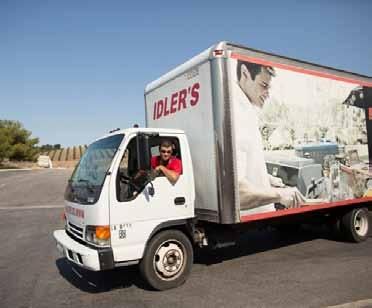



The floating fireplace is a conversation piece but also an important energy saver, as warmth from the bottom radiates the floor below and efficiently heats the home.
Waste sorghum husks, a grass that is used to brew gluten-free beer among other things, finds a second life here as an interior design element that inspires as well as it insulates.
Steel cable railing supports the sleek, minimalistic design by allowing for plenty of light and airflow to pass from room-to-room and contributes to the modern look of the home.
Not only are the many ceiling fans a key part of the interior design, they also serve as an important climate controlling component. During the winter they help circulate the warm air from the fireplace and during the summer they complement the many natural breezeways.


The suspended pots and pans are out of the way, but the hanging pot rack serves as a statement piece contrasting the clean lines of this kitchen.
Energy efficient appliances that are careful to not steal the spotlight are hidden away, out of view. It was also important to the couple that, not only were the appliances thrifty with their energy use, but also quiet as well.








Total Homes Sold Average Asking Price Average Selling Price Sales Price as a % of Asking Price Average # of Days on the Market
Total Homes Sold Average Asking Price Average Selling Price Sales Price as a % of Asking Price Average # of Days on the Market
Total Homes Sold Average Asking Price Average Selling Price Sales Price as a % of Asking Price Average # of Days on the Market
2012 30 559,120 542,250 97.28 76
2013 33 549,980 540,590 98.35 55
+/16.67% -1.63% -0.31% 1.07% -27.63%
2012 17 569,276 555,852 97.54 69
2013 14 694,543 698,028 100.50 16
+/-17.65% 22.00% 25.58% 2.96% -76.81%
2012 16 510,513 488,421 95.55 47
Total Homes Sold Average Asking Price Average Selling Price Sales Price as a % of Asking Price Average # of Days on the Market
down-
2012 10 772,000 745,850 96.76 165
2013 21 585,667 575,476 98.64 25
+/31.25% 14.72% 17.82% 3.09% -46.81%
2013 10 906,400 891,150 98.36 75
+/0.00% 17.41% 19.48% 1.60% -54.55%
2012 21 564,238 552,805 98.19 55
2013 24 598,881 578,125 96.62 57 town
foothill
2013 27 627,293 618,070 98.53 45 blvd
+/14.29% 6.14% 4.58% -1.57% 3.64%
+/-3.57% 25.10% 23.98% -1.17% 28.57%
Total Homes Sold Average Asking Price Average Selling Price Sales Price as a % of Asking Price Average # of Days on the Market
+/-3.45% 2.55% 3.69% 0.65% -61.76%
SOURCE: San Luis Obispo Association of REALTORS®




Arroyo Grande Atascadero Avila Beach Cambria/San Simeon Cayucos Creston Grover Beach Los Osos Morro Bay Nipomo Oceano Pismo Beach Paso (Inside City Limits) Paso (North 46 - East 101) Paso (North 46 - West 101) Paso (South 46 - East 101) San Luis Obispo Santa Margarita Templeton Countywide


385,065 295,200 489,500 406,250 575,000 385,000 296,500 292,500 360,000 349,000 206,000 535,000 289,500 225,500 249,000 270,000 449,500 232,000 375,000 335,000

419,000 341,500 685,750 387,750 537,500 345,000 327,000 324,250 398,500 410,000 237,000 567,500 333,000 250,100 257,500 362,000 504,500 310,000 405,000 376,000










You have probably seen it hundreds of times, maybe even thousands if your commute takes you past the Madonna Inn. We’re talking about that big beautiful mountain called Cerro San Luis. Maybe you have even hiked up the hill to the peak. Well that journey got a bit easier a while ago. And it offers up a whole new perspective of how there really is No Place Like Home.
It is as iconic a representation of San Luis Obispo as the Inn that sits below it. There is a reason the image of Cerro San Luis is plastered on most postcards, pamphlets and pictures aimed at luring tourists to SLO Town. It is spectacular, even from the ground.
It is even more so if you hoof it up the hill toward the top, and that is exactly what you can now do seven days a week without much effort.
The Madonna Inn started offering horseback trail rides to guests by special arrangement last summer. This summer it is a full-time operation and you don’t have to be a guest to take advantage of the opportunity. “We have about 20 trail horses and we can easily accommodate a group of about 15 riders at a time,” says head wrangler, Haddie Stella Tal.

Tal has led rides all over the country, but says there is no doubt that there is not a prettier place to do so than right here. “There’s just so much to see. You get the ocean, you have the beautiful Laguna Lake and this mountain to ride on,” she says. “It’s like horse heaven.”
And while you may be familiar with the trails that wind their way up and around the mountain that hikers, cyclists and athletes of
all kinds use daily, the route you take up on these journeys doesn’t intersect with those. And the journey happens at a lazy, leisurely pace.

“We do a two-hour ride that actually goes to the very top of the mountain,” Tal says. “Even people who’ve been here locally who have actually hiked to the top say it’s completely different when you’re on a horse.”
You really do feel like you are out on the range, with familiar vistas providing the only proof that you are, in fact, right in your own backyard. “We have a resident family of about 15 deer that kind of meander around and we can ride through them, and lots of roadrunners and some bobcats,” says Tal. “Sometimes we might see a coyote.”
I know what you are thinking. Heading up a mountain on a horse can be a bit intimidating for novices, but Tal’s got you covered even if you’ve never saddled-up before. “It doesn’t matter if you’ve ridden a thousand times or never. We’ll get a horse to fit you.”
Most people opt for the hour-long ride, but if you are having fun, and you’re feeling a little adventurous, go ahead and book the two-hour tour. Either way, you will likely feel mighty grateful by the time you loop down over Lopez Lake and head for home. Because there’s no place like it, and it’s more proof, there’s No Place Like Home.
Jeanette Trompeter, KSBY News anchor and reporter, hosts the “No Place Like Home” series every Tuesday evening at 6pm.






Welcome your guests in style with the Comfort Sleeper featuring a patented sleep system with no bars and no springs. With thirteen great styles, seven sizes, from cot to king, a full-length mattress, Crypton protection, and an exclusive partnership with Tempur-Pedic—it has everything you’ve come to know and love and more. Plus it’s made in Dallas, Texas, right here in the good ol’ US of A. $2,599.00 - $5,549.00 // San Luis Traditions 748 Marsh Street, San Luis Obispo (805) 541-8500 // sanluistraditions.com

This whimsical lazy susan by Sticks is crafted from birch wood, woodburned, and then hand-painted making each piece unique and all its own. There are multiple designs and utilitarian, artisan items to choose from. Could there be a better way to set the table?

$385.00 Hands Gallery 777 Higuera Street San Luis Obispo (805) 543-1921 handsgallery.com
Inspire envy at your next backyard barbeque with this authentic Corona cooler made in Mexico and imported directly by Luna Rustica. Fully insulated and self-draining. The 60 bottle capacity will keep your guests happy and your party in full swing.




$399.00 // Luna Rustica 2959 Broad Street, San Luis Obispo (805) 546-8505 // lunarustica.com
Pinch me, I must me dreaming! These sheet sets are woven from 100% bamboo viscose. They’re 300 thread count, but feel more like 1,000 thread count pima cotton. And they come in eight wonderful colors, from twin to California King. Soft on the skin and easy on the earth, bamboo is like a dream come true. Now the hard part is getting out of bed in the morning... $119.95 - $169.95 // Bambu Batu 1023 Broad Street, San Luis Obispo (805) 788-0806 // bambubatu.com

Emerald, the Color of the Year 2013, is described as lively, radiant, lush… a color of elegance and beauty that enhances our sense of well-being, balance and harmony. Baxter Moerman designed and built this elegantly simple ring featuring a bright green 0.90 carat Colombian emerald. The 18K white ring shank is lovingly engraved by hand to achieve this attractive repeating pattern. This piece captures the one-of-a-kind beauty every woman deserves.

$1,660.00 // Baxter Moerman Jewelry 1118 Morro Street, San Luis Obispo (805) 801-9117 // baxtermoerman.com

The cool older brother of the original S’well you know and love. He’s taller, he’s been working out, and the ladies swoon when they catch sight of him. Holds 25oz/750ml of your favorite drink and keeps your beverage cold for 24 hours and hot for 12. Even better, this S’well bottle has been designed to hold the contents of a bottle of wine, great for summer picnics and dining al fresco!

$45.00 // Assets 853 Monterey Street, San Luis Obispo (805) 781-0119 // sloassets.com
Made from 100% natural palm fiber grown sustainably on the warm coasts of Mexico, the Tula Beach Hat is perfect company for lounge chairs and frisbees. The lightweight material cleans easily, dries quickly and even floats! All Tula hats have the 50+ UPF rating—the highest possible for sun protective gear. So many styles to choose from, you’ll want more than one!


$35.00 // Apropos // 1022 Morro Street, San Luis Obispo 840 11th Street, Paso Robles // (805) 784-0664 // shopapropos.com


Kicking off the fall fashion season, Hammitt marries down-to-earth West Coast style with luxe leathers and fine detailing like real suede lining, easy-access cell phone pockets and custom designer hardware. Designer Tony Drockton will be appearing in-person at Ian Saude for an August 31st trunk show during Cork Couture—an evening to benefit Jack’s Helping Hand. $175 to $1250 // Ian Saude // 1003 Osos Street, San Luis Obispo // (805) 784-0967 // iansaude.com
Handcrafted “Heart Wings” butterfly and sterling silver pendants and earrings come in dazzling colors and are beautifully iridescent. No butterflies are harmed and are gathered only after dying naturally from tropical butterfly farms. This is a rainforest “sustainable use” activity that helps preserve wild butterfly populations, provide needed income for farmers, and save rainforests by creating economic viability without cutting them down. Environmental beauty at its best.
$45.00 - $65.00 // Turn To Nature 786 Higuera Street, San Luis Obispo (805) 540-3395 // turntonature.com

Super Close Shave Formula by Baxter of California is fortified with antiseptic tea tree oil, witch hazel, skin soothing and softening peppermint, menthol, and marine elements. The rich cream provides an ultra-thin cushion between your skin and your razor, without clogging the blade. And it makes your skin feel oh so smooth. Perfect for the man who’s more than ordinary...
$16.00 // Jules D. // 672 Higuera Street, San Luis Obispo (805) 781-0722 // jules-d.com

It takes enormous effort from a whole lot dedicated people to make a non-profit organization viable over the long haul. But, it also requires the audacity of just one person to bring it to life in the first place. Such is the case with CASA of San Luis Obispo County as it celebrates its twentieth birthday this year.
When local businesswoman Susan Polk and her husband Jim first became foster parents here in the mid-1980’s, they realized that things would be much easier if they could talk with other foster parents. How nice would it be to trade tips and share stories and perhaps commiserate once in awhile? They checked in with the courts and the Department of Social Services, but as Polk shares, “They just would not budge when we asked for information about other families, and they were unable to understand how it would benefit everyone.” Polk then decided to start up the Foster Parent Association locally, an organization which facilitates connection among local families. As the Polk Family grew, so did their participation in the association. It was not long before Polk was attending seminars and workshops, learning all that she could about foster care.
A few years prior, David Soukup, a rather innovative Seattle-based Juvenile Court judge observed that the children appearing before him needed advocates. So many of them had parents who were incapable of making decisions for their kids, or had new foster parents who, frankly, did not know the children well enough yet to understand their needs—which meant that they often fell through the proverbial cracks in the system. The judge then designed a program for volunteers to attend court hearings to speak up for and advocate on the behalf of these children. That person, who was recognized by the court as the child’s representative became known as a CASA, or Court Appointed Special Advocate.
During the mid-80’s, a San Luis Obispo County grand jury commissioned a report citing the need for representation of local children stuck in the Juvenile Court, or Dependency Court as it is known here.
As the saying goes, if you want to get something done, find a busy person to make it happen. So, Polk set out to start a CASA program locally. She began by writing a grant to secure funds. A total of $20,000 was awarded as seed money by another organization. Next she hired an attorney, Mary Harris, to help set up
hundred volunteers, or CASA’s. Each CASA is assigned one child, or a group of sibling children and puts in, on average, about 15 hours per month; but, depending on the individual CASA and the needs of the children, it can be more (some CASA’s attend their child’s parentteacher conferences, for example). And, by law, each one of those CASA’s must be supervised by a full-time staff person with each staff person overseeing no more than 30 CASA’s. Currently there are a total of four supervisors, three full-time and one part-time.
The biggest challenges faced by the organization, according to Tardiff, come down to the need for more funding so that more supervisors can be hired as well as the need for more CASA volunteers. The new CASA’s go through 30 hours of training before being assigned to advocate for their first child and the organization has to be careful to maintain its 30 to 1 ratio of volunteers to supervisors, which makes it a delicate balancing act. But, the need is there. Currently, there are approximately 550 children in the Dependency Court system in San Luis Obispo County and CASA is able to provide services to about 150 of them.
a legitimate 501(c)(3) non-profit organization. Lastly came the recruitment of Terri Clarke, a marriage and family therapist as well as Carol Mathews, a Cuesta College staff member. The start-up team then tackled the “mountains of paperwork” which were generated as part of the process and the continual “chipping away” finally resulted in the birth of CASA of San Luis Obispo County. That first year, 1993, debuted with 18 trained volunteers who served 18 children—since then, over 2,000 kids have had a CASA here locally.
Today the organization is guided by the steady hand of Teresa Tardiff, who received her CASA training in Santa Barbara around the same time Polk was signing her name on the start-up documents back at home. A few years later Tardiff found herself moving up the coast to begin her work with CASA of San Luis Obispo County. The organization now has close to one
To a CASA the work is highly rewarding, as they are able to make a direct impact on the lives of children. And, Tardiff lights up when she reports that “many of [the foster children] have now returned to become CASA’s themselves, including Sonja Polk [Meet Your Neighbor, Apr/May 2013], who Susan and Jim Polk took in as a foster child but have since adopted.” Today, Sonja spends much of her free time serving as a spokesperson for the organization, which has come a long way since the days when she was first introduced to a CASA of her own.
To donate to CASA of SLO County or inquire about becoming a volunteer CASA, please call them at (805) 541-6542.

Spanish Lakes Stunner –Exquisite custom home on over an acre in gated Templeton community. 4 bedroom, 3 bath home with open floor plan and top of the line finishes throughout. Professionally landscaped grounds and great oak studded views. Offered at $1,029,000. Gavin Payne 805.550.3918
Exquisite European Style Retreat –3 bedroom, 4 bath home plus office located in close proximity to downtown San Luis Obispo. Featuring lavish rooms, an elegant study, and a master suite to retreat to. This custom built home offers ultimate privacy and is prefect for entertaining! 3-Garage. Offered at $1,050,000. Chris Engelskirger 805.235.2070
Paso Robles Custom Home – Located in desirable Westside neighborhood of Paso Robles. Tri-level 3 bedroom home with a spacious living room, vaulted ceilings, custom cabinetry and fireplace. The backyard is private and beautifully landscaped. This home is located at the end of a cul-de-sac on a lot that is over 14,000 square feet. Offered at $465,000. Denise Silva Topham 805.801.7389
Development Potential – Rare opportunity to find a large lot like this in one of San Luis Obispo’s most sought after neighborhoods. This is a home builder’s dream or a developer’s gem! Just over a half-acre lot with many development opportunities. Two separate entrances to lot. Older structure on property. Offered at $650,000. Terry Gillespie 805.459.2022

Sweeping Morro Bay Views –Spacious home with 4 bedrooms, 3 baths plus an office/den that feature panoramic views of Morro Rock. Family room, living room and an enclosed sunroom that offer so much potential. Entertaining areas front and back! Scenic coastal living in Cabrillo Estates. Offered at $849,000. Denise Silva Topham 805.801.7389
Beautiful West Atascadero Home –









Custom, tri-level home with breathtaking panoramic views of the surrounding oak-studded hills. The quality build includes a lower level secondary unit with its own entry, living area and kitchen. The second level has its own wrap-around deck and master bedroom with large master bathroom. Offered at $539,000. Jed Damschroder 805.550.7960
1212 Marsh Street, Suite 1, San Luis Obispo, California 93401 office 805.592.2050 | inquiries@HavenSLO.com HavenSLO.com
Arroyo Grande-based band, The Ragged Jubilee, loves to tell the story of their very first gig on their first tour. Their excitement was electric when they stopped at a Costco to pick up all of the rations they would need for their 17-day road trip. The van was loaded and the energy was palpable. First stop, Kimo’s in San Francisco’s Nob Hill neighborhood. The once-gay-bar-turned-music-venue on Polk Street drew “twenty or so people” to the show. The small crowd didn’t diminish the mood—they were now a touring band! But, the positive vibe faded as their songs echoed through the cavernous hall. It was bad enough that the club manager discovered that one of their members was underaged, somewhere around 17, but when their drummer at the time ended up in a fistfight with one of the patrons, they knew the gig was over. The unceremonious ending to the show led to a random traverse of San Francisco in the middle of the night with no place to sleep. While completely lost in the city, the band met a girl named Kat. She invited them to crash at her place, but warned that she owned a particularly territorial dog. By the time the morning sun made an appearance, the bandmates had consumed every bit of their Costco provisions and their bedding had been “marked” by Kat’s dog. Despite the fact that they had no food, no bedding, and nowhere to stay, they could not have been happier—they were on tour and still had 16 shows left.
The joy for their craft is most apparent in frontman, Ethan Burns, who started writing music at just 11-years-old. “It’s constant,” he says, “I always keep a notepad with me and I’m always thinking about words and music and how they go together, new ways of saying things.” Burns grew up listening to blues and soul and his influence on the band is clear. Their sound has been likened to a 1950’s Chicago-style, including a hint of gospel, with similar traces found in the music of The Dead Weather, Otis Redding, and, even Neil Young. Their soulful roots are most apparent in their song Like a River where Burns’ throaty, raspy voice parlays a compelling urgency with incredible feeling which connects with a unique musical combination that includes an organ. The result is a rhythmic, almost hypnotic repetition which slowly accelerates and reaches its crescendo with the the chorus that repeats, “I just want to love you / I just want to love you / and hold you in my arms.”

The band holds residency at Harvelle’s, Santa Monica’s iconic music venue, and can be seen playing there nearly once a week. Live shows featuring original music from their two albums, American Moan and In the Valley can also be found filling up venues such as The Del Monte Speakeasy in Venice and The Echo in LA. A two-week-long end of summer tour is up next and the band has dates scheduled in Sacramento, Grass Valley, Arcata, Salem, Portland, Seattle, Los Angeles, San Diego, and, oh yeah, San Francisco… but don’t worry, The Ragged Jubilee has come a long way since those early days. And, as Chandler Haynes, the band’s bass guitar player shares with a laugh, “After that first experience, we said, ‘Okay, we got it out of our system. Let’s never let that happen again.’” And in case you were wondering, they’ve already lined up a place to stay.
PHOTOGRAPHY BY JONATHAN DAVID SLO LIFE
 BY TOM FRANCISKOVICH
BY TOM FRANCISKOVICH
It turns out that the Central Coast sits atop the mother of all shale oil fields. What does that mean for our future?
Ifirst heard that funny sounding word, “fracking,” a couple of years ago and, aside from a very rudimentary understanding, I really did not know much about it until recently. And, the more I dug into the issue the more I realized how important it is because, as it turns out, there is much more to the Central Coast than its beautiful coastlines and scenic landscapes. Deep
beneath its golden, vineyard-filled rolling hills and its distinctive oak-pocked volcanic plugs rests the country’s largest domestic shale oil field: The Monterey Shale. Currently, multinational oil companies are lining up for a piece of the action in anticipation of one of the largest economic booms of all time, bringing jobs and wealth and tax revenue to our area unlike anything we have ever seen. And the whole thing got me thinking…
When President George W. Bush boldly declared in his 2006 State of the Union address that, “America is addicted to oil,” the news came as a surprise to no one. Bush was just one in a long line of presidents who recognized the unsustainable path of our country’s energy demands. But unlike President Jimmy Carter, who installed solar panels on the White House and admonished Americans to turn down their thermostats while addressing them in a cardigan sweater during the depth of winter, Bush, instead of trying to reduce demand, found a way to increase supply.

The technique for oil and natural gas extraction, known as hydraulic fracturing—“fracking” for short—was first developed in 1947. But, it was expensive and cumbersome and not all that effective. Plus we had a willing trading partner in OPEC and oil was cheap and there was plenty of it. The nascent fracking technology sat in oil executives’ file cabinets for years in favor of the low-hanging fruit, such as off-shore wells and small-scale drilling on private property. But, mostly, the guys in the Middle East kept selling us the stuff and we kept driving our kids to soccer practice in 6,000 pound SUV’s, and life was good. While policymakers and presidents had been wringing their hands over the precariousness of our situation, the American public had long forgotten about the gas rationing of 1973 that came as a result of OPEC’s oil embargo.
When President Bush made his remarks in
2006, oil prices had been holding relatively steady at around $65 per barrel, but his declaration of dependence marked the beginning of its ascent to a peak of $147.50 during the summer of 2008 (it is around $105 per barrel currently). Skyrocketing prices combined with mounting evidence that the Saudis were funding Al Qaeda made domestic exploration a top priority. The exuberant chants of “Drill, Baby, Drill!” could be heard from the 2008 Republican National Convention on the floor of the Xcel Energy Center in Saint Paul, Minnesota and captured the hearts and minds of many Americans. Politician after politician made the case that our national security was at stake and we now had the ability to get the black gold that lay just below our feet. Although, curiously, no one used that word—fracking.
The concept is rather simple. Hydraulic fracturing requires drilling a hole far down into a bed of shale rock to liberate what is called “tight oil” in the industry (the same technique can also be used to extract natural gas). The well goes straight down below the drinking water supply where it makes a sharp 90 degree turn and runs horizontally into the thick layer of shale. A mixture of water, sand, and chemicals called the “fracking fluid” are then blasted into the rock at approximately 4,200 gallons per second effectively creating tiny fissures in the shale (less than 1mm thick). The sand finds its way into the cracks to hold them open allowing the oil to seep out. It is then pumped up to the top and put into a truck for a trip to the refinery. So what’s the problem? For starters, it takes 3 to 8 million gallons of water for the average well to extract its oil. But, with oil at over $100 per barrel the math is easy: buy the water for a penny and sell the oil for a dollar.
The real problem, aside from the massive amounts of wasted water, are the chemicals found in the fracking fluid—there are approximately 40,000 gallons of unnamed and unknown chemicals used per fracking site. And those chemicals, as it turns out, are considered proprietary and are protected by the Trade Secrets Act, the same law that allows Colonel Sanders to keep us in the dark about his chicken recipe. The Colonel does tell us that he uses “11 herbs and spices” however, which is much more than we know about fracking fluid. Despite the fact that the oil executives have been chicken when it comes to sharing their original recipes, it has been found that, historically, the
Do you see fracking as a boom or a bust? Do you want it here on the Central Coast? Email us at info@slolifemagazine.com and be sure to tell the people who can do something about it right now.
San Luis Obispo County Board of Supervisors:
Franck Mecham (805) 781-4491 fmecham@co.slo.ca.us
Bruce Gibson (805) 781-4338 bgibson@co.slo.ca.us
Adam Hill (805) 781-4336 ahill@co.slo.ca.us
Debbie Arnold (805) 781-4339 darnold@co.slo.ca.us
most common chemical used in fracking is methanol. And, this is where things get really interesting. Methanol becomes methane during the fracking process. Methane is the leading cause of global warming, the worst of the greenhouse gases that climate change deniers refer to dismissively as “cow farts.”

Interestingly, the San Joaquin Valley, where cow farts are commonplace, has seen a rise in fracking opposition coming from an unlikely coalition of farmers and environmentalists who view a dwindling water supply as the common rallying point. Opponents also point out that, in addition to the water that is diverted from crops and the toxic chemicals that pollute the ground, methane gas is also naturally abundant in shale rock. So, with each barrel of oil we pump out of the ground we are also liberating some unknown numbers of cubic tons of greenhouse gases into the atmosphere. It may not be exactly like Tom’s Shoes “One for One,” but it is some ratio that is sending us further toward a point of no return. Incidentally, it is the methane gases that are trapped in northern tundras that worry climate scientists the most: as the weather warms, the ice melts releasing more methane into the atmosphere, which further accelerates the process. Additionally, methane gas has made its way into the drinking water supplies of communities near fracking operations, as stories of water coming out of the tap and catching on fire are commonplace. According to one independent study, methane concentrations were found to be 17 times higher in drinking water wells near fracking sites.
All of this brings us back to our home here on the Central Coast, a special part of our Creator’s Kingdom or a pure accident of geology, depending on your own belief system. Regardless of how it came to be, the same landscape that you and I and thousands of visitors cherish is now being viewed by oil executives with dollar signs in their eyes. Because below our feet sits the mother lode of all shale formations, the 1,750 square miles known as The Monterey Shale, which the US Government estimates to contain 15.4 billion barrels of recoverable oil. Our corner of the territory technically sits on the Santa Maria Basin within the The Santos Shale, and it is some of the most fertile ground within the span
that stretches from the Los Angeles area along the Southern and Central Coasts and through the San Joaquin Valley.
The Central Coast could experience an economic boom unlike anything we have ever seen in our lifetimes. If our open spaces and private landowners were to allow fracking to reach its fullest potential, it is estimated by a recent University of Southern California study that it would create 2.8 million jobs statewide by 2020 and increase tax revenues for state and local governments by $4.5 billion per year. Just imagine how that rising tide would lift all of our boats? The economy would be white-hot and opportunity would be endless. Besides, who needs all those tourists anyway? And this is not just pie-in-the-sky, there is a precedent for all of this; for example, the Bakken formation in North Dakota. With less than half of the estimated recoverable oil compared to our Monterey Shale, fracking Bakken has made North Dakota a state that now leads the country in just about every economic measurement. Times are good, business is booming, and everyone benefits. At least for now.
Examining a more mature operation in the Appalachian Basin of Western Pennsylvania paints a somewhat different, although sometimes conflicted picture. Drilling and mining are not new to the area and The Marcellus Shale has been fracked for years now. Recently, a preliminary study funded by the US Department of Energy found that fracking has not effected the drinking water there (the EPA expects to release its study late next year). This came as news to many residents in the area who have helped propel the subversive song My Water’s on Fire Tonight, to millions of internet views with its catchy chorus, “What the frack is going on with all this fracking going on?” And, since fracking enjoys almost no regulation plus unique protections under the Uniform Trade Secrets Act, while also being excused from the Safe Drinking Water Act (President Bush omitted frackers in 2005), it may be a long while before Western Pennsylvanians, and the rest of us, do actually know what the frack is going on.
Regardless of how you feel about fracking, from an economic standpoint it is working. And many economists give domestic oil and gas exploration and production much credit in
helping our country pull through the worst of the Great Recession. And, most astonishing of all, because of fracking, the International Energy Agency (IEA) estimates that the United States will overtake Saudi Arabia as the world’s largest oil producer by 2017. That means that the energy independence that our policymakers have been fretting about for generations is now within our reach, and it didn’t require that we all buy Toyota Priuses and Teslas. Yet, the IEA’s report continues by chiding the developed world by suggesting that we are “failing to do enough to improve energy efficiency… if those efficiencies were tapped, total energy demand between now and 2035 could be halved, without any decline in living standards.”
All of this leaves you and I with a decision to make. How do we feel about fracking right here on the Central Coast? Is it a boom or a bust? Up to this point, hydraulic fracturing has not been practiced in San Luis Obispo County. And, as policymakers struggle to keep up with the rapid pace of exploration, the law is unclear about whether local governments have the ability to ban fracking. One thing is for sure, however, oil companies must secure a permit to drill a new well and the Board of Supervisors has the final say in that regard. So, if fracking is to be either prevented or encouraged here, it will likely happen on the county level. Because once the permits are granted, oil companies are pretty much free to frack at will. But, if recent history is any guide, Big Oil may be in for a Big Fight when it comes to the Central Coast. Such was the case with the band of neighbors in the Huasna Valley who beat back Excelaron’s permit application to drill eight oil wells on private land. In an indication of what is at stake, two days after the supervisors, who bowed to pressure from the Huasnaites, voted to deny its permit, the multi-national energy company filed a $6.24 billion (that’s billion with a “b”) against the county (the case was later tossed by a Superior Court judge). That may be just a warning shot, however, as The Monterey Shale represents a cool $16 trillion. But, as it turn out, the road leading to oil executive nirvana passes right through the San Luis Obispo Board of Supervisors—and if the Huasna Valley skirmish has taught us anything, it’s that our political leaders are listening. SLO LIFE






As part of SLO High’s Class of ‘13, she is now Ivy League-bound. With prestigious scholarships in tow, Phillips will be settling into her dorm room at Brown University this fall in Rhode Island where her future continues to look bright.
What have you been up to this summer? I packed up all my fancy clothes to be a junior counselor at Girls State at Claremont Mckenna, and then to attend the GE-Reagan Scholars Retreat in Simi Valley, before I finally went off to Stanford where I interned at the Martin Luther King Jr. Institute. A lot of blouses and pencil skirts were required for those activities. A lot.
What is noteworthy about you? Noteworthy? That is a very generous assumption. What a humbling statement. I have received some scholarships, including the Coca-Cola and PG&E Bright Minds, but it is really the generosity of those corporations which is noteworthy. I think that I was quick to dismiss huge companies as anti-the-little-guy. Yet, they sure have altered my thinking. What sort of extra-curricular activities are you involved in? My absolute favorite has been working as an instructor with Project Surf Camp. And plunging into the Pacific with disabled children may sound like a recipe for disaster, but to see the grin on a child’s face as he rides his first wave is indescribable. It led me to serve as a teacher’s assistant in the special education department, volunteer with Special Olympics, Special Education Prom, and the Central Coast Autism Spectrum. I just may have found my passion.
What are your interests and hobbies? I am a serial hair donator, and have donated 36 inches in the past five years. I can wiggle my ears, and frequently do. I love the idea of permaculture, and our front yard is currently producing tomatoes and artichokes which make me proud. Biking is a favorite of mine, as is backpacking and I trekked the John Muir Trail to Mt. Whitney last year. The natural beauty was brilliant.

What is your favorite memory of all time? Last summer I met President Obama. It was just so impossible to fathom and out of this world. Quite honestly, if there weren’t pictures to prove it, I don’t know that I would believe it happened. When he walked in the room, it was the most surreal moment.
Where do you see yourself in 10 years? Hopefully in the Peace Corps. I am very eager to explore, experience the dirt of other lands, breathe foreign air. I am just generally antsy, and am propelled by an insatiable drive to go places and do things, and it sure would be grand to help a few people along the way.
What is it that you look forward to most? Right now, I am most looking forward to venturing to South Korea with 49 other Americans in August with the Cultural International Educational Exchange. I really wanted to go to North Korea, but as we are not on the best terms, I figured I’d settle for South.
What is something that not many people know about you? This past year I have begun to share a part of me which I previously hid at all costs. I struggled with childhood epilepsy. I’m sharing this now because I hope that someone who is battling something, in any capacity, might look to me, not as a role model, but as proof that setbacks are just that, and they are not the end. So to anyone who has been labeled as inept, lesser, incompetent, or has to work twice as hard simply to level the playing field—keep on keeping on.
SLO LIFE
Know a student on the rise? Introduce us at slolifemagazine.com/share



Like most things of enduring value, Leadership SLO did not simply materialize out of thin air. There were a lot of fits and starts and bumps in the road during its formation in the late 1980’s. But, as Dave Garth, former SLO Chamber of Commerce president/CEO, recalls, “I knew in my heart that this was going to be one of the most important things we did.”
The importance that Garth identified prior to its inception was the ongoing, legacy aspect of the program, which culminates in a handson community project chosen by the class graduates. According to Sandi Sigurdson, the executive director of the Leadership program, the purpose of the Legacy Project, as it has come to be known, is to achieve three objectives: Give class members a real world opportunity to use their new leadership skills and strengthen their bond with other class members; leave a long-lasting, positive benefit to the community; and, increase long-term viability of the program.
The Leadership program begins each year as a new class of 36 people, who are carefully selected by a panel of alumni to represent a broad cross-section of the county, convene at the Wonder Valley retreat for three days of intensive training and bonding exercises. The
class then reassembles on a monthly basis for day-long programming onsite at various county locations. Each one of those days carries a theme designed to expose the class to one particular aspect of the community. For example, this year, Class XXII was hosted by the Performing Arts Center on Cal Poly’s campus for its “Arts & Culture Day” and “Media Day” was held at KSBY-TV’s studios. Throughout the year, wineries, small manufacturers, and halls of government each take their turn in the spotlight with their corresponding day. Those visits are led by locals at the top of those particular fields.
Students are told early on that they will be asked to come up with their own Legacy Project, a process Garth describes as “perhaps the most difficult part of the program—getting agreement on what to do.” Over the years, Leadership Legacy Projects have touched the community in many different ways, usually reflecting the unique character of each class.
The first Legacy Project was officially completed by Class IV, as the first three classes were consumed with fundraising and recruitment to ensure that the Leadership SLO program would survive through its infancy. Turn the page to find out what other classes have done.
I knew in my heart that this was going to be one of the most important things we did.
- Dave Garth former SLO Chamber of Commerce president/CEO




“
Never doubt that a small group of thoughtful, committed people can change the world. Indeed, it is the only thing that ever has.
- Margaret Mead
Leadership Class XXIII is now accepting applications for its 2014 program. To apply or learn more, visit leadershipslo.org.
Class IV - provided thousands of hours of community service around the county and created database of other potential projects.
Class V - built the first wall at Wonder Valley, which has become an important metaphor during the retreat as students are tasked with getting everyone over the 15-foot monstrosity—with no ropes or equipment!
Class VI - created an endowment that funded the Leadership Scholarship program over the subsequent five years.
Class VII - printed Leadership SLO t-shirts and sold them as a fundraiser for the program.
Class VIII - produced a video about the program for the purpose of soliciting corporate sponsors.
Class IX - coordinated the first Leadership Alumni Mixer and the first alumni award.
Class X - refurbished a rundown Victorian home in San Luis Obispo that was used to house those rehabilitating from drug abuse programs.
Class XI - established the Leadership SLO Endowment Fund and held several fundraisers to seed the account.
Class XII - reconstructed the obstacle wall originally built by Class V in Wonder Valley.
Class XIII - collected and donated books to several organizations, including the Prado Day Center; they also published a children’s coloring book whose sales were donated to the library for new book purchases.
Class XIV - planted trees at the Damon Garcia Sports Complex; helped with the construction of Santa’s House in Mission Plaza; and coordinated a leadership day for high school students at Hearst Castle.
Class XV - restored the Healing Garden at Transitions Mental Health’s Growing Grounds off of Johnson Avenue, and built a gazebo and three benches there, as well.
Class XVI - revamped the landscaping and cleaned-up the entrance to the Tiny Tigers preschool at San Luis Obispo High School.
Class XVII - worked on the Johnson Ranch trail by taking part in its construction as well as developing the interpretive signage.
Class XVIII - collaborated with San Luis Obispo’s three Rotary Clubs to establish and enhance community gardens.
Class XIX - created an outdoor classroom environment for the toddlers at the Child Development Center, a child abuse intervention, prevention, and treatment program for families.
Class XX - built a human sundial at the SLO Botanical Gardens, visitors to the sundial can tell the time by where the shadow is cast.
Class XXI - is creating a new display for San Luis Obispo County in the “Hall of Counties” at the State Capitol building in Sacramento.
Class XXII - although the plan has not been finalized, they are proposing to clean-up, landscape, and finish the City’s master plan at Sinsheimer Park.





Acouple of weeks ago my husband surprised me with what we call a “wild card date night”—an evening out doing something new—by taking me to throw pottery. It’s rare for me to truly love things I’m not good at, but art is that one exception. I was thrilled with the prospect and impressed with his willingness to risk it and try something out of the ordinary.
So off we went to Anam Cre’, a local, laid back pottery studio located in downtown San Luis Obispo’s Creamery. This quaint space makes you feel like you walked into an art studio that never sleeps. It’s always evolving with the people and art pieces that come in and out; every one contributing in their own way to the vibe of the studio, whether with an incredible sculpture or smear of clay on the floor. It’s the kind of place you don’t feel that you have to be an expert to join in and be welcomed, which was good for us.
For those wondering about throwing pottery and what it entails, it’s a two-stage process. The first time you go, your goal is to sculpt the clay. The second time you go, you paint/glaze your art. After both stages your pieces are fired in a kiln (a stone oven that looks related to a pizza oven). So, for the partner who is looking to get credit for two nights of creativity, this is for you.

Owner, Shevon Sullivan, guides you through selecting your medium, the type of clay you will be working with, and teaches you how to knead it. Then you head to the wheel and embark on a journey of concentration, applied pressure, and enjoyment.

Had we simply chosen to make platters or small cups, we may have needed less attention, but as it was, we came wanting to make beer steins that resembled Spike’s friendship beer mug, you know,

the giant ceramic steins that hold four liters of beer?
Why not? We thought if we were going to throw pottery, we might as well maximize the experience.
Sullivan graciously informed us that to throw something that big as beginners was ambitious and likely to end in a warped condition. To her credit she was not far off the mark.
Ignoring her advice, we doubled the clay quota and started in on the steins with gusto. It was incredible to see how quickly the combination of pressure, water and wheel turning creates a shape that can be so easily manipulated. The humor of our night came after my husband continued to thin the walls of his would-be-stein only to watch it crumble. Twice he went back to the kneading table, accompanied by our combined laughter. Thankfully, Sullivan thrives on redemption projects like ours and helped us craft what we fondly describe as steins, but anyone else would assume to be large vases.
We came back on a second date to finalize the glazes and paint on the finishing touches. Looking at our artwork lined up next to incredible designs and sculptures was a little humbling, but like proud parents of kindergarten art, we smiled at our finished product.
The humor, the freshness of the experience and the memory we have was well worth the $20 per person charge for two hours of creativity. Anam Cre’ hosts adult pottery open time several evenings a week from 6:30 to 8:30pm and Sullivan lets you BYOW (bring your own wine). So if it has been a while, or if you’ve never tried, give throwing a shot.
With a little research we discovered the origins of “throwing” pottery. According to those more well-read than us, the Old English word “thrawan” from which “to throw” comes, means “to twist or turn.” Going back even farther, the Indo-European root “ter” means “to rub, rub by twisting, twist, turn.” The German word “drehen,” a direct relative of “to throw,” means “turn” and is used in German for throwing. Because the activity of forming pots on the wheel has not changed since Old English times, the word throw has retained its original meaning in the language of pottery but, as we all know, it has developed a completely different meaning today.

There’s low-fire or high-fire clays, and they warrant different results. Low-fire clays are great for bright colors and detailed decoration. But they’re not good in water, so if you do go for low-fire clay, get a glaze that you know will seal. Highfire clays aren’t so great with bright colors, but they’re sturdy, waterproof, and can be texturized easily. Glazes may move when fired, so detailed images could get blurred.
Put the clay on the center of the wheel head. The easiest way to do this is by tossing the clay with some force on the center.
Centering the clay means that its outer edges spin perfectly smooth with no bumps or wobbles. There are different ways of doing this… so don’t be afraid to ask for help.





Once the clay is centered, it is time to open it. To start, you need to make a hole in the center. To do this, start by moving your finger across the top of the clay in a straight line. This is so you find the exact center. If the hole is not started in the exact middle, the clay will begin to wobble and you will have to re-center it. Seriously, it’s alright to seek out instruction.
After you have created an opening the bottom will need to be compressed. To do this you can either use a wooden rib to take out all of the uncentered clay from the bottom or you can slowly smooth it out with your fingers. The former method will create a flat bottom. Okay, there’s a lot more to it than this... so, just ask for help already!
This is the Japanese practice for eating until you’re 80 percent full. Skip the gluttony—experts assert that it can take as long as 20 minutes before your stomach alerts the part of the brain that controls the satiety response. Eating less is not only associated with avoiding weight gain but also living longer.


That’s high intensity interval training. Short bursts of intense activity have been shown to be even more effective at burning fat than prolonged periods of exercise. That’s really good news for those barely able to find the time to workout.


Known as holy basil,

been
in Ayurvedic
for thousands of years (mystics believed it fostered personal growth and enlightenment). Usually sipped in tea or taken in supplement form, tulsi is full of antioxidants and anti-inflammatory properties. Even better, tulsi also lowers cortisol, the hormone associated with stress and belly fat.










Fresh crisp delights like seared scallops served over a bed of baby spinach and arugula with a citrus vinaigrette help us stretch out the relaxing feel of our long, warm Central Coast summer.

Scallops are quick-cooking, sweet, tender, mild, and delectable. While we serve ours over a bed of greens they are equally delicious tossed with pasta, or served as a first course with lemon wedges.

1 to 1 1/4 pounds sea scallops
2 tablespoons grape seed oil
Course sea salt
Finely ground white pepper
1. Before cooking, remove the abductor muscle from the side of each scallop (some scallops are sold with the muscle already removed). Rinse them under cold water and pat dry—surface moisture impedes browning.
2. Salt and pepper the scallops.
3. Add the oil to a preheated 12 to 14-inch sauté pan on medium-high heat.
4. Once the oil begins to smoke, carefully add the scallops, making sure they are not touching each other.
5. Cook for 2-3 minutes per side, until they are light brown. Gently move the scallops a bit to be sure they don’t stick.
6. The scallops should have a 1/4-inch golden crust on each side while still being translucent in the center. Serves four.
*Preheating the pan before adding the oil prevents the oil from becoming gummy or causing the scallops to stick. The reason we use grape seed oil is because of its high smoking point.
While we’re only making enough dressing for four plates, it takes no longer to mix a big batch, so feel free to double the recipe. And, it means tomorrow night’s salad will be ready in minutes. 1 grapefruit
1. Peel half of each piece of fruit for the salad, separating each slice and removing the white/clear casing. Reserve the other half of each fruit to use for the dressing.
2. Whisk together juice from half the grapefruit and half the orange, olive oil, vinegar, salt and pepper. Add chives and stir. Set aside.
3. In a large bowl dress and toss the baby spinach and arugula. Arrange four plates of salad. Add citrus, pecans, and scallops.

The vitamin C in citrus fruit enhances the absorption of iron in food.

I Care International Benefit August 10 Avila Bay Athletic Club & Spa icareinternational.org


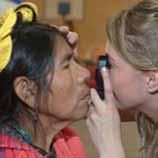
Join us for dinner, wine, dancing and a silent auction benefitting I Care International. I Care’s goal is to help others improve their quality of life by providing the gift of better vision and health. From the little boy who smiles because now he sees the clouds in the sky, to the older lady who cries because now she can sew and have an income, I Care International is changing lives one by one.
Dancin’ 2013 August 11 Chistopher Cohan Center pacslo.org
Enjoy an entertaining afternoon brought to you by Academy of Dance. The exciting annual school performance will showcase the wide variety of the students’ skills and techniques.

Broadway by the Sea August 17




Chapman Estate, Shell Beach operaslo.org
Celebrate summer with an outdoor concert featuring the voices of OperaSLO’s best singers performing the music of Broadway and more at the Chapman Estate By The Sea. The gorgeous seaside home is one of the most stunning and exclusive locations on the Central Coast. Arrive early, picnic with friends, bid on silent auction treasures, stroll the gardens, observe plein air painters and marvel at the breathtaking views from this historic estate in Shell Beach.


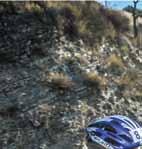



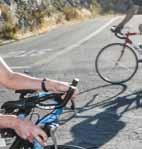




September 1
Avila Beach Golf Resort slosymphony.com

Bring a rousing close to your summer with an afternoon of sensational music by the sea! It kicks off with a musical flashback to the 1980’s when Michael Jackson was thrilling and girls just wanted to have fun! Featured artist, Café Musique—an extraordinary quintet that presents a rich mixture of styles including gypsy, tango, classical and folk—combines powerful vocals with soaring violin and driving accordion. You will be treated to an exotic and exciting sonic journey around the world. A booming rendition of Tchaikovsky’s “1812” featuring the Cuesta Chamber Singers under the direction of John Knutson will close the program.
Incorruptible September 6 – 29 SLO Little Theatre slolittletheatre.org

Welcome to Priseaux, France, circa 1250 A.D. The river flooded again last week. The chandler’s shop just burned to the ground. Nobody’s heard of the wheelbarrow yet. And St. Foy, the patron of the local monastery, hasn’t worked a miracle in thirteen years. In other words, the Dark Ages still look pretty dark. All eyes turn to the Pope, whose promised visit will surely encourage other pilgrims to make the trek and restore the abbey to its former glory. That is, until a rival church claims to possess the relics of St. Foy—and “their” bones are working miracles. All seems lost until the destitute monks take a lesson from a larcenous one-eyed minstrel, who teaches them an outrageous new way to pay old debts.
San Luis Obispo Home Show

September 21 - 22



Alex Madonna Expo Center slohomeimprovement.com
The San Luis Obispo Home Show ensures that you have all of the resources you need to make your home beautiful, no matter what your style or budget. The free show offers resources, tips, seminars and ideas on building, decorating, and organizing your home.







